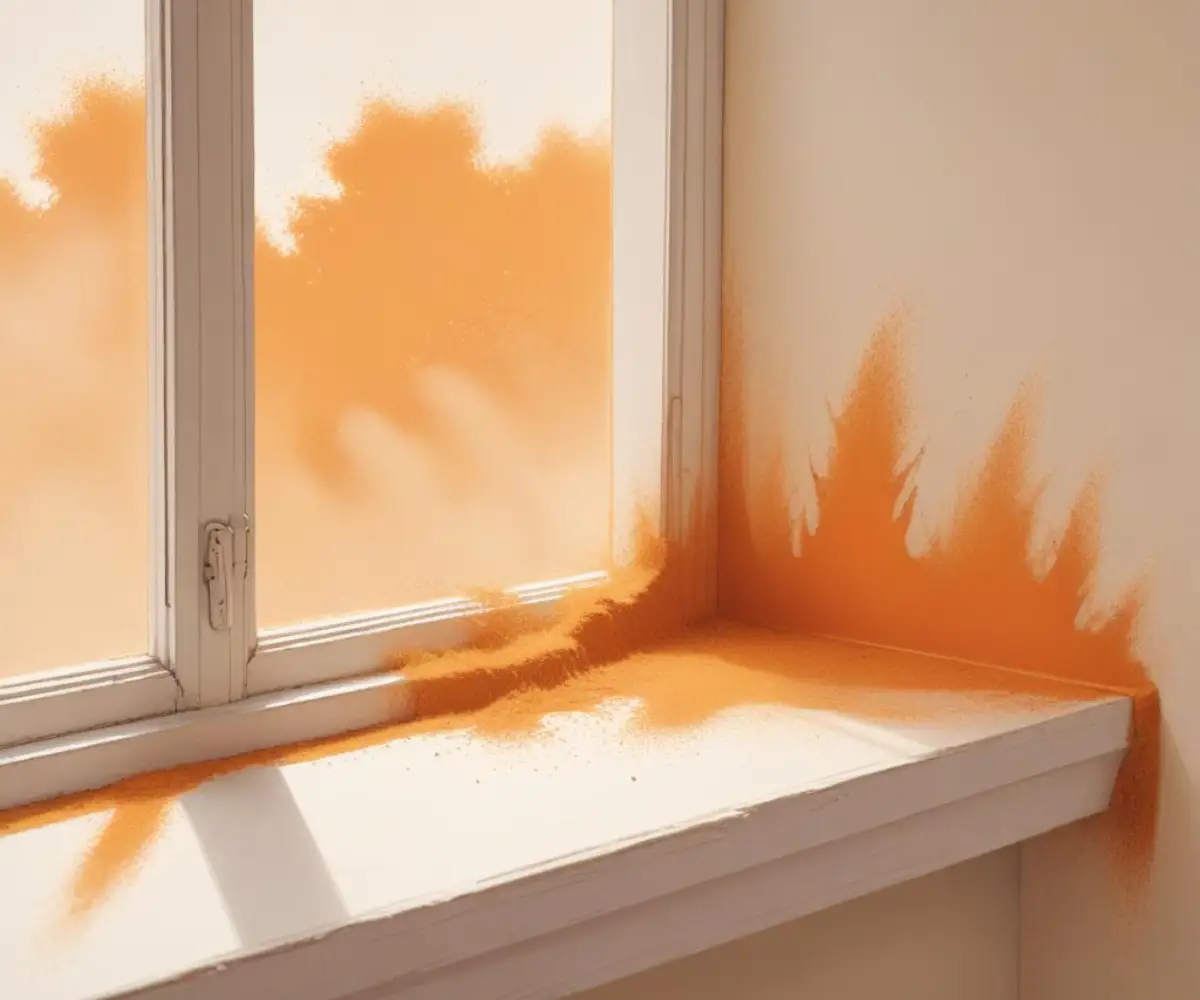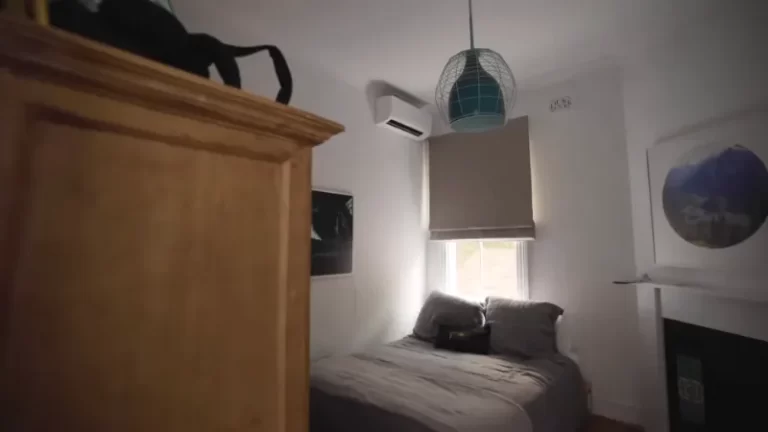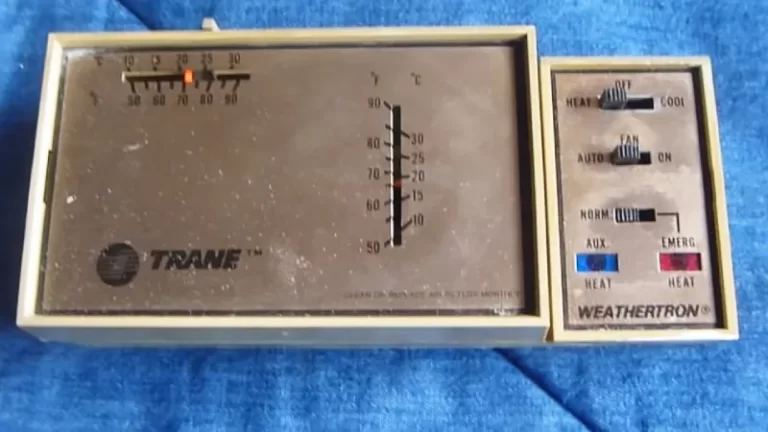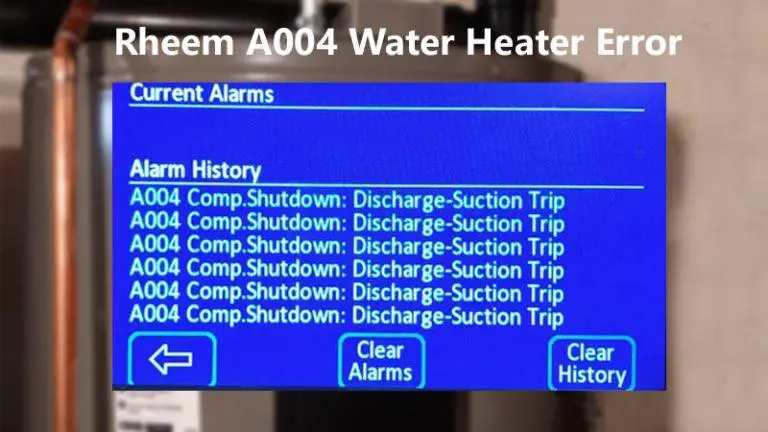Orange Dust In My House? Here’s the Unsettling Cause & Fix
You wipe down a windowsill, and a few days later, it’s back. A fine, rust-colored powder mysteriously coating your surfaces, settling in corners, and streaking down from your air vents. Discovering mystery orange dust in your house can be unsettling, sparking worries about everything from mold to pests to the structural integrity of your home.
You’re not alone in this concern. Many homeowners encounter this perplexing problem and are left wondering about its origin and potential risks. This comprehensive guide will illuminate the common culprits behind that orange dust, help you identify the specific source in your home, and provide a clear, actionable plan to eliminate it for good.
You'll Learn About
Uncovering the Source: What’s Causing That Orange Dust?
That frustrating orange residue is almost always a sign of an underlying issue that needs attention. While there are several possibilities, one cause is far more common than the others. By playing detective and examining the evidence, you can pinpoint the source and take the correct steps to resolve it.
The Primary Suspect: Rust from Your HVAC System
The most frequent cause of widespread orange dust is, simply, rust. Your home’s heating, ventilation, and air conditioning (HVAC) system is a vast network of metal components, primarily galvanized steel ductwork, that can corrode over time. When moisture is introduced into this system, rust forms on the interior surfaces of the ducts.
As air forces its way through the vents, it picks up these tiny, lightweight rust particles (iron oxide) and distributes them throughout your entire home. This is why you’ll often find the dust is heaviest near air supply vents and on surfaces like windowsills and electronics that attract airborne particles. The root cause of the moisture in your ducts can be high humidity, condensation from the air conditioner, or even a leak from a pipe or roof that has dripped onto the ductwork.
Pollen: The Seasonal Intruder
If you notice the orange dust appears primarily during certain times of the year, especially spring or fall, it might not be dust at all, but pollen. Many trees and plants release fine, lightweight pollen that can be orange or yellowish in color. This pollen can easily enter your home through open windows and doors or be pulled in through your HVAC system.
Pollen is typically less uniform than rust dust and may feel slightly sticky. A key indicator is whether the dust is concentrated on outdoor-facing surfaces like window screens and sills. Upgrading your HVAC filter to a high-MERV rated filter can help capture these allergens before they circulate in your home.
Orange Slime Mold or Bacteria
In damp, humid areas like bathrooms, basements, or under sinks, you might be dealing with orange mold or bacteria. Species like Serratia marcescens can appear as a slimy or crusty orange-pink film. It thrives on soap scum and moisture, so it’s commonly found in showers, on tile grout, and around drains.
While often called “orange mold,” it is typically a bacterium. Distinguishing it from rust is easy: mold or bacteria will have a slimy, wet texture when fresh, unlike the dry, powdery feel of rust dust. This issue is localized to wet areas and requires a different cleaning approach focused on disinfection and moisture control.
Construction or Environmental Debris
Have you had any recent construction, remodeling, or landscaping work done nearby? The source of the orange dust could be external. The disturbance of red clay soil, brick cutting, or sanding certain types of wood can create fine, airborne particles that infiltrate your home.
This type of dust often appears suddenly and in large quantities. If you suspect this is the cause, improving the seals on your windows and doors can help prevent it from entering. It’s also a good reminder that not all wall damage is from inside; sometimes outside forces are to blame, much like when you face Command Strip wall damage from an interior project.
Wood-Boring Insects
A less common but more concerning cause is an infestation of wood-boring insects, such as powderpost beetles. These pests consume hardwoods, leaving behind a trail of incredibly fine, dust-like frass (excrement) that can be reddish-brown or orange. You would typically find this dust in small piles directly below infested wood, such as furniture, flooring, or structural beams.
Look closely for tiny, pin-sized exit holes in the wood near the piles of dust. If you suspect a pest issue, it is crucial to contact a professional exterminator immediately to assess the damage and treat the infestation before it worsens.

Identifying the Culprit: A Quick Diagnostic Table
Use this table to help you narrow down the source of the orange dust in your house based on its appearance, location, and other tell-tale signs.
| Potential Cause | Appearance & Texture | Common Locations | Key Identifier |
|---|---|---|---|
| Rust from HVAC | Fine, dry, powdery dust; uniform orange-brown color. | Near air vents, on windowsills, and surfaces throughout the house. | Widespread distribution; may have a faint metallic smell near vents. |
| Pollen | Very fine, lightweight powder; can be yellowish-orange and slightly sticky. | Windowsills, outdoor furniture, and surfaces near open windows. | Appears seasonally; worsens on high-pollen days. |
| Orange Slime Mold/Bacteria | Slimy, wet film or a crusty, dry patch; often pinkish-orange. | Bathrooms (showers, grout), under sinks, and in persistently damp areas. | Localized to high-moisture zones; has a slick or crusty texture. |
| Construction Debris | Gritty dust; color matches nearby soil, brick, or materials. | Concentrated near construction areas, windows, and doors. | Coincides with recent construction or landscaping work. |
| Pest Frass | Extremely fine, flour-like powder in small mounds. | Directly below wooden furniture, beams, or flooring. | Accompanied by tiny exit holes in the wood surface. |
Your Action Plan: How to Get Rid of Orange Dust for Good
Once you’ve identified the likely source of the dust, you can take targeted steps to eliminate it. This process involves addressing the root cause, performing a thorough cleanup, and implementing preventative measures to keep it from coming back.
Step 1: Address the Root Cause
Simply cleaning up the dust is a temporary fix. You must solve the underlying problem to stop the orange dust from reappearing.
- For Rust in HVAC Ducts: This is the most critical issue to address. The first step is to schedule a professional HVAC inspection. A technician can use a camera to inspect the inside of your ductwork to confirm the presence and extent of the rust. Based on their findings, solutions may include professional duct cleaning to remove existing rust particles, sealing ducts to prevent moisture intrusion, or in cases of severe corrosion, replacing sections of the ductwork.
- For High Humidity: To prevent future rust and mold, control your home’s humidity. Aim for an indoor humidity level between 30-50%. You can achieve this by using exhaust fans in bathrooms and kitchens, ensuring your clothes dryer is vented properly, and investing in a whole-home or portable dehumidifier.
- For Pollen: Keep windows and doors closed during peak pollen seasons. Upgrade your HVAC filter to one with a MERV 11 rating or higher to effectively trap pollen particles. Regular cleaning during allergy season will also be necessary.
- For Mold or Bacteria: Clean affected areas with a solution of vinegar or a commercial mold remover. For extensive mold problems, it’s best to call a professional mold remediation service to ensure it is removed safely and completely.
- For Pests: If you see evidence of wood-boring insects, contact a pest control professional immediately. Do not delay, as these pests can cause significant structural damage.
Step 2: The Ultimate Clean-Up
After you’ve addressed the source, it’s time for a deep clean to remove all traces of the orange dust. Work from the top of your house down to ensure you capture everything.
Start by dusting high surfaces like ceiling fans, light fixtures, and the tops of cabinets. Use a damp microfiber cloth, which will trap the dust instead of just pushing it into the air. Follow up by wiping down all hard surfaces, including walls, baseboards, and furniture.
Finally, vacuum all flooring, upholstery, and curtains using a vacuum cleaner equipped with a HEPA filter. A HEPA filter is crucial as it can capture the extremely fine particles of rust, pollen, or frass, preventing them from being recirculated into the air.
Step 3: Implement Preventative Measures
Keeping the orange dust away requires ongoing diligence and maintenance. Regular home care can prevent a wide range of issues, from dust problems to more serious concerns like an electric wall heater glowing red, which often stems from dust buildup and lack of maintenance.
Schedule annual HVAC maintenance to have the system professionally cleaned and inspected. This not only prevents rust but also ensures your system is running efficiently and safely. A well-maintained system is key to home health, just as understanding why you might have a gas fireplace uneven flame is part of responsible appliance ownership.
Continue to monitor your home’s humidity levels and address any leaks or water intrusion immediately. Regularly replace your HVAC air filters—every 1-3 months is a good rule of thumb—to maintain good indoor air quality.
A Breath of Fresh Air: Taking Control of Your Indoor Environment
Finding orange dust in your house is a problem that should not be ignored. While it can be alarming, it is almost always a solvable issue. By methodically identifying the source, addressing the root cause, and performing a thorough cleaning, you can restore your home to a clean and healthy state.
Most often, that orange dust is a clear signal from your HVAC system that it needs attention. Taking proactive steps to maintain your home’s ductwork and control humidity will not only eliminate the dust but also improve your indoor air quality and protect your biggest investment. Don’t let the dust settle—take action now for a cleaner, healthier home.




